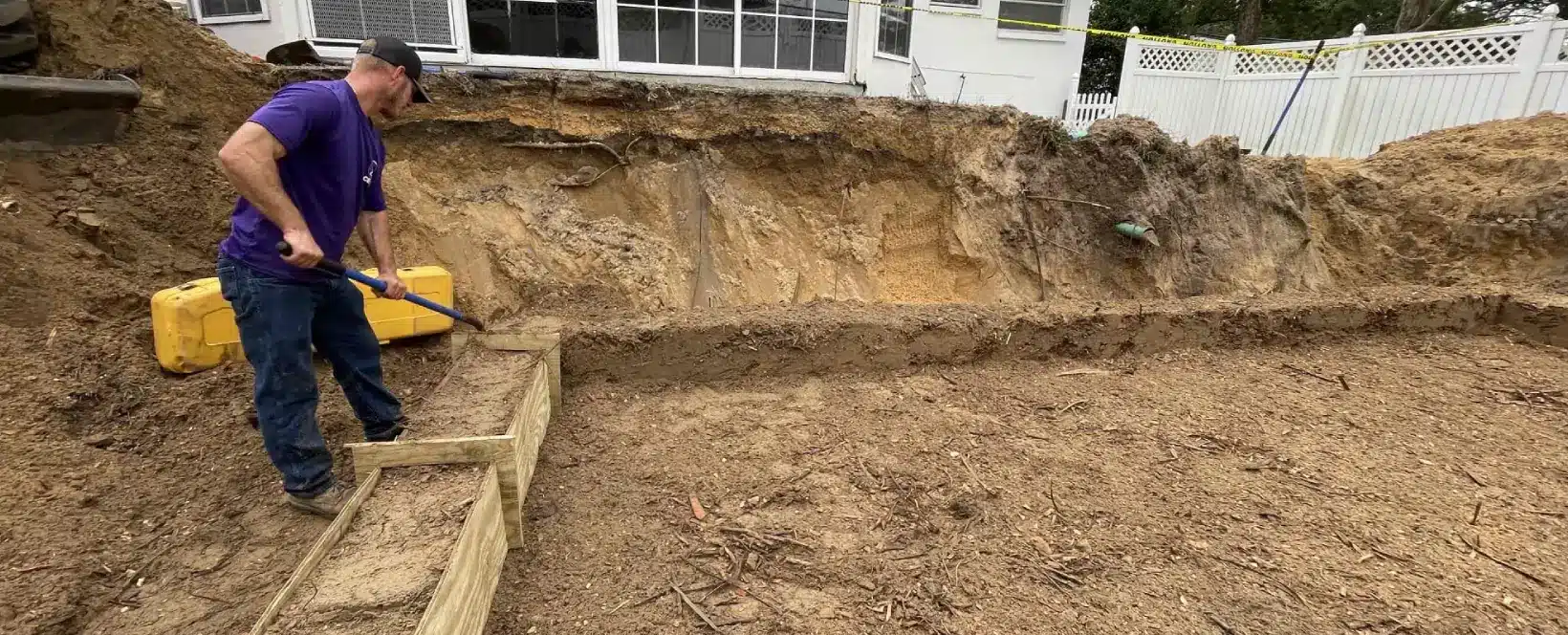Many people think that septic systems are sized based on the size of the home or property. Instead, we measure the number of bedrooms and the number of occupants to estimate the daily wastewater flow. Like the rest of the septic system, a drain field’s size is based on the expected daily wastewater flow. However, drain fields require more considerations than just expected flow. In this article, ACE Septic & Waste will explain how we determine drainfield size in detail.
Drain Field Sizes
Drain fields, also known as leach fields or absorption fields, are used to spread effluent across a wide area for dispersal and filtering. The size of a drainfield must ensure it can effectively process and dispose of the wastewater generated by a household or building. When designing a drain field, ACE must consider the following:
- Soil Percolation Rate: The rate at which the surrounding soil can absorb water is one of the most significant factors in drain field sizing. Soil testing, also called a percolation test, measures how quickly water disperses into the subsoil. Different soil types, like clay, sand, and loam, will have varying percolation rates that directly influence the necessary size of the drainfield.
- Household Size and Water Usage: The amount of wastewater the septic system needs to handle is also critical and directly affects the required size of the drainfield. As mentioned above, this is typically estimated based on the number of bedrooms and estimated occupants, which serves as a guide to measure water usage.
- Septic Tank Size: The size of the septic tank itself will also impact the size of the drainfield. Larger tanks or multiple tanks used in a serial or a cluster will require a proportionally larger drainfield to handle the effluent effectively.
- Local Regulations: Local health and building codes, especially in Florida, often have specific requirements or guidelines for drainfield sizes based on the property’s size, the anticipated wastewater load, and environmental considerations.
- Environmental Factors: The local environment, including proximity to water bodies, groundwater levels, and landscape topography, also plays a crucial role. Regulations might require larger drain fields or specific types of systems to prevent groundwater contamination and nearby waterways. For example, new drainfields in Florida are required to be at least 24 inches from the water table. This may prevent some types of drain systems from being used.
- Technology and System Type: Different types of septic systems, such as conventional, mound, aerobic treatment, or others that incorporate advanced technology, may require different drainfield sizes. Some systems, like mound systems, drip distribution systems, and aerobic treatment systems (also called ATUs), are designed to be more efficient in smaller spaces. In contrast, others might need more extensive areas to function correctly.
Understanding these factors and consulting with a septic system professional can help determine the appropriate size of a drainfield that meets both regulatory requirements and the functional needs of the property.
How Do I Know What Drainfield Size I Have?
While you can leave many septic details to the professionals, all homeowners using a septic system need to know where their drainfield is and its rough size to prevent accidental damage. Here’s a straightforward approach to figuring out what size drainfield you have:
- Review Installation Records: The easiest and most accurate way to determine the size of your drainfield is by reviewing the installation records or septic system design plans. These documents should have been provided to you at the time of installation or when you purchased the property. They will include detailed information about the size, location, and design of your drainfield.
- Check With Local Health Department: If you need access to your installation records, your local health department may have a copy of your septic system permit or plans. These records are typically required for the original system installation and may include all the necessary specifications.
- Physical Inspection: You can physically inspect the area where your drainfield is located. Look for a large, flat area of ground that may be slightly mounded. You might be able to determine the size from the pattern of grass growth — greener, lusher grass over the drainfield is common due to the added moisture and nutrients present.
- Consult a Septic Professional: If you’re still unsure or unable to locate any records, consider asking your septic provider. A professional can assess the system and provide an estimate of the drainfield size based on observations and measurements of the septic tank and other components.
Understanding the size of your drainfield will help with maintenance and finding potential problems. Knowing your drainfield’s size and capacity is crucial to avoid overloading the septic system if you plan significant home renovations or additions. If you are looking for drain field or septic services, don’t hesitate to contact ACE Septic & Waste.







